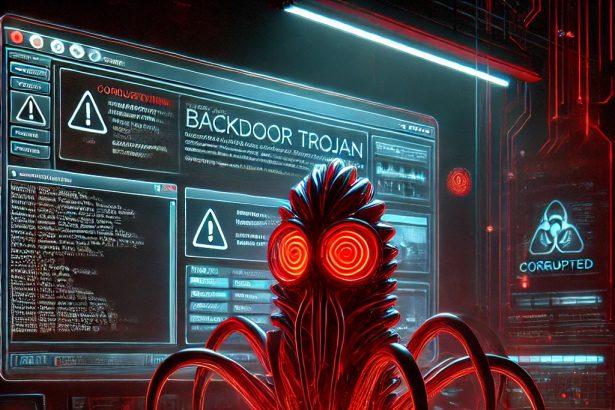A recent breach at a mid-sized firm saw attackers slip DarkComet RAT onto workstations via a social-engineered email attachment. Once inside, the RAT silently exfiltrated credentials and captured webcam feeds before IT could respond. Such real-world cases underscore the urgent need to detect and eradicate DarkComet swiftly—before sensitive data, proprietary code, or personal information falls into hostile hands.
Threat Overview
DarkComet is a Remote Access Trojan (RAT) originally released in 2008, later abused in high-profile campaigns (notably during the Syrian conflict). It grants adversaries full remote control—file manipulation, keylogging, screen capture, even webcam activation—making it a potent espionage and data-theft tool.
In-Depth Analysis
Infection Vector
- Phishing campaigns: Malicious executables disguised as invoices or software cracks.
- Bundled installers: Freeware packages embedding the RAT installer.
- Social-engineered chat payloads: Fake “Facebook” icons in Skype messages that execute DarkComet.
Behavioral Profile
- Execution & Persistence
- Installs as a service or registry “Run” key.
- Hides its executable via
attrib +h +sto evade casual discovery.
- Reverse-Socket Connection
- Opens a listening socket on the victim; the attacker’s client GUI connects back.
- Spy & Control Modules
- Keylogging, screen capture, webcam/mic streaming.
- File transfer, remote shell, process management.
- Command & Control (C2)
- Periodic “heartbeat” packets to attacker-controlled servers.
- Optional proxy chaining via built-in SOCKS5 server.
Risk Assessment
DarkComet’s feature-rich toolkit poses a serious threat to both personal and enterprise environments. In 2014, Syrian activists were targeted via booby-trapped chat messages, resulting in arrests and network compromises. Larger campaigns have leveraged the RAT for corporate espionage, financial fraud, and botnet recruitment. Given its silent operation and full-system control, DarkComet rates as a high-severity threat for any Windows endpoint.
Artifact Text
A typical phishing lure delivering DarkComet might resemble:
Subject: Invoice_#4721.exe
From: billing@trustedvendor.com
Dear Customer,
Please review the attached invoice for your recent purchase. Let us know if you have any questions.
Regards,
Trusted Vendor Accounts Department
(Attachment “Invoice_#4721.exe” is actually the DarkComet server installer.)
Manual Removal of Trojan Malware
Important: Manual removal is not recommended for beginners. It involves interacting with system files and the Windows Registry, which, if done incorrectly, can lead to system issues.
Step 1: Restart in Safe Mode with Networking
Booting into Safe Mode disables unnecessary startup programs, including most malware.
- Press Windows + R, type
msconfig, and hit Enter. - In the System Configuration window, go to the Boot tab.
- Check Safe boot, then select Network.
- Click Apply and restart your computer.
Step 2: Terminate Malicious Processes
- Open Task Manager using Ctrl + Shift + Esc.
- Navigate to the Processes or Details tab.
- Identify any unusual or unrecognized processes. Be cautious—do not stop critical Windows processes.
- Right-click a suspicious process, choose Open File Location, then End Task.
- Delete the associated file from the opened folder.
Step 3: Delete Trojan Files
- Press Windows + R, type
%appdata%, and press Enter. - Check for any unknown folders created recently.
- Repeat the same for these directories:
%localappdata%C:\Program FilesC:\Program Files (x86)C:\Windows\Temp
- Delete any folders or executables related to the Trojan.
Step 4: Clean Up the Windows Registry
- Press Windows + R, type
regedit, and press Enter. - Go to these registry paths:
HKEY_LOCAL_MACHINE\SOFTWARE\Microsoft\Windows\CurrentVersion\RunHKEY_CURRENT_USER\SOFTWARE\Microsoft\Windows\CurrentVersion\Run
- Look for registry entries with unusual names or links to suspicious files.
- Right-click and delete the unwanted entries.
Tip: Back up your registry before making changes by clicking File > Export in the Registry Editor.
Step 5: Reset Your Web Browsers
Malicious Trojans often tamper with browser settings to redirect users to unwanted sites.
Chrome
- Settings > Reset and clean up > Restore settings to their original defaults.
Firefox
- Help > More Troubleshooting Information > Refresh Firefox.
Edge
- Settings > Reset settings > Restore settings to their default values.
Step 6: Perform a Full System Scan with Windows Defender
- Open Windows Security from the Start menu.
- Click Virus & threat protection > Scan options.
- Choose Full Scan and click Scan now.
Step 7: Update Windows
- Go to Settings > Windows Update.
- Click Check for updates and install all available patches.
Method 2: Automatically Remove Trojans Using SpyHunter
Manual removal can be effective, but it’s time-consuming and may leave hidden components behind. SpyHunter is a trusted malware removal tool that automatically detects and eliminates Trojans and other threats.
Step 1: Download SpyHunter
Use the official download link: Download SpyHunter
Follow these instructions for installation: SpyHunter Download Instructions
Step 2: Install the Program
- Locate the downloaded file, usually SpyHunter-Installer.exe.
- Double-click it and follow the on-screen steps to complete the installation.
- Launch SpyHunter when finished.
Step 3: Scan Your PC
- Click the Start Scan Now button on the SpyHunter dashboard.
- Allow the scan to complete (it may take several minutes).
- Review the detected items.
Step 4: Remove Threats
- Click Fix Threats.
- SpyHunter will quarantine and remove the detected Trojan files automatically.
Step 5: Restart Your PC
Once the cleanup is finished, restart your system to finalize the changes.
Trojan Prevention Tips
- Avoid downloading software from unofficial sources.
- Be wary of email attachments, even from known contacts.
- Keep Windows and applications updated with the latest patches.
- Use a reputable security program like SpyHunter for active malware protection.
Conclusion
DarkComet RAT remains one of the most versatile and stealthy backdoors ever released. Early detection—spotting unexplained network connections, disabled security suites, or unexpected system services—is critical. Once confirmed, use a reputable removal tool (e.g., SpyHunter) and follow up with a full malware scan and credential reset to restore security. Timely intervention thwarts data theft and closes backdoors before attackers can strike again.




